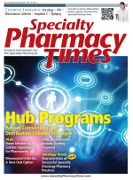Publication
Article
Specialty Pharmacy Times
HIV
Author(s):
Health care professionals debate the usefulness and limitations of a home detecton test for HIV.
Health care professionals debate the usefulness and limitations of a home detecton test for HIV.
Home HIV Testing Elicits Tempered Physician Response
In an opinion article published in the October 9, 2012, issue of the Annals of Internal Medicine, A. David Paltiel, PhD, and Rochelle P. Walensky, MD, MPH, discuss their concerns regarding the recent approval and marketing of a new HIV home test. Although they believe that the advent of home HIV testing is a positive step in the direction of personal empowerment and awareness of the virus, they doubt that the test’s availability over the counter will make an impact on the number of undetected HIV infections.
For one thing, they write, the high price tag will likely only attract an affluent clientele composed of persons at low risk for HIV and persons with very recent, and hence undetectable, high-risk exposures. They also worry that persons with HIV infection will use the test to monitor their therapy or incorrectly believe their therapy has reversed their seropositivity. The authors believe that nothing should alter the CDC’s recommendation that all sexually active adults in the United States should be tested at least once for HIV. This test should have a direct linkage to care, the authors write, “in settings where high-quality testing and referral services can easily be provided, under 1 roof, to persons at risk for unidentified infection.”
The authors further warn that patients who inquire about the home HIV test should be educated that the test does not detect the virus, but rather the body’s immune response to that virus. For this reason, it is not most effective until 3 months after a high-risk event. Also, a negative result does not imply reduced susceptibility to infection and is not a green light to take greater sexual risks. Finally, a positive result requires immediate confirmation with a test that is not available at home.
What Real Effect Does Tenofovir Have on Kidney Function?
Since more patients are expected to take tenofovir after it was approved for pre-exposure prophylaxis, the concern that tenofovir may have a negative impact on renal function has become magnified.
Clinicians from Canada suggest this concern should be minimal. In a study published online November 9, 2012, in Clinical Infectious Diseases, researchers from the University of Montreal enrolled 1043 HIV-positive patients who had taken tenofovir disoproxil fumarate (TDF) and measured their kidney function over 10 years. They used estimated glomerular filtration rate (eGFR) as their surrogate for renal function, and anything below 90 mL/min/1.73 m2 was considered renal dysfunction.
Using Cox modeling analysis, they found that in comparison with other antiretroviral agents, TDF exposure increased the risk of reduced kidney function by 63%. They found the decrease of eGFR to remain relatively constant and small after the first year of therapy. Tenofovir, the researchers write, does not seem to cause worsening kidney function over time, and “clinicians can get more comfortable to leave their patient on tenofovir knowing that the loss will not get worse after many years” of treatment.
US Task Force Recommends HIV Screening for All Adults
In a draft recommendation statement posted online November 20, 2012, the US Preventive Services Task Force (USPSTF) strongly recommends that clinicians screen all people aged 15 to 65 years for HIV infection. It goes on to recommend testing for all pregAnant women and women who present at time of labor whose HIV status is unknown.
The USPSTF bases its new recommendation on a meta-analysis of studies conducted between 2004 and 2012 that were randomized trials or observational studies that either compared HIV screening approaches or studied the effect of initiating antiretroviral therapy (ART) at different CD4 cell count thresholds. HIV is symptomless at the beginning stages of transmission, so screening and treating early is imperative.
The USPSTF released a statement saying, “New evidence indicated that ART reduces risk for AIDS-defining events and death in persons with less advanced immunodeficiency and reduces sexual transmission of HIV.” Treatment, the statement continues, is crucial in patients with a CD4 cell count less than 200 cells/mm3 and is suggested in patients with a CD4 cell count of 200 to 500 cells/mm3.
About the Author
Michael C. Wisotsky, PharmD, RPh, practices in Shrewsbury, New Jersey.







